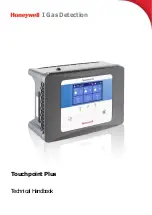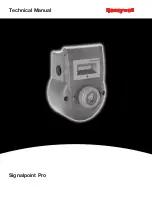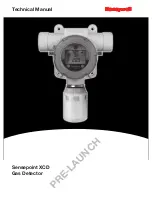
STATUS SCIENTIFIC CONTROLS
Installation, Commissioning & Routine Gas Testing
FGD10A-M Gas Detector
TD18/032
Issue:
10
Change Note:
1869
Page 11
5.
I
NSTALLATION
It is important that the correct cable and gland types are used when installing
the FGD10A-M in a hazardous location.
The cable entry devices and blanking elements of unused apertures shall be
of a certified flameproof type, suitable for the conditions of use and correctly
installed.
With the use of conduit, a suitable certified sealing device such as a stopping
box with compound shall be provided immediately at the entrance to the
flameproof enclosure.
In order to prevent dangerous overloading of the FGD10A-M gas detector, it
is important that the installer observes the relay contact rating and ensures
that external circuits connected to the relay contacts are suitably protected
from exceeding that rating and associated cabling is adequately rated and
suitably installed.
Guidance on the correct installation of systems is provided by EN60079-14:
2008. It is the responsibility of the installer to ensure compliance with the
relevant standards.
To ensure effective gas detection, the FGD10A-M must be located at a
height appropriate to the density of the target gas relative to air. For
example, Methane (relative density 0.55) is lighter than air and so it will tend
to accumulate at a high level within a confined space. Whereas Petroleum
(relative density 2.8) is heavier than air and it will tend to accumulate at
around ground level.
European standard EN 60079-20-1:2010 provides comprehensive
flammability data (including relative density) on approximately 300 types of
gases.













































